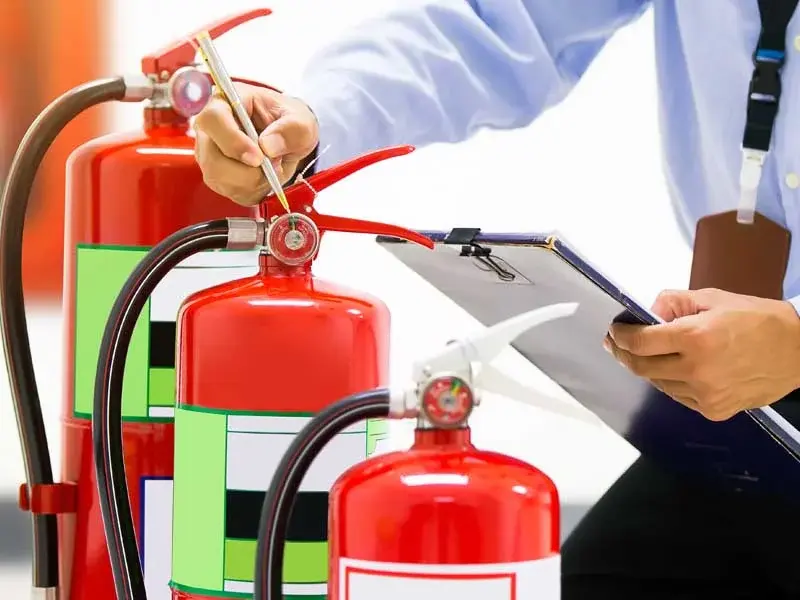
NEBOSH Online Conference 2025: Empowering Global Safety Professionals — Sponsored by Gulf Academy of Safety
In today’s rapidly evolving industries, safety isn’t just a regulation

Fire safety is not just about installing alarms and extinguishers—it’s about understanding the risks involved and putting in place strategies to mitigate them. Conducting a fire risk assessment is a legal requirement for most properties, but more importantly, it helps safeguard lives and assets. At Gulf Academy Safety, we aim to educate businesses and individuals on the importance of knowing the types of fire risk assessment and how different fire risk levels impact safety planning.
This blog will provide an overview of the types of fire risk assessment and the significance of understanding various fire risk levels to help you effectively manage fire safety in any environment.
Choosing the right type of fire risk assessment for your property or business is essential for thorough fire safety management. Each type caters to different needs and levels of inspection, helping identify potential hazards and taking steps to prevent them. Let’s break down the four most common types of fire risk assessments:
This is the simplest and most widely used type of fire risk assessment. It covers easily accessible areas of the building, including corridors, staircases, and exits. The primary goal is to identify obvious fire hazards, such as blocked fire exits, and ensure basic fire safety measures like alarms and extinguishers are in place.
A Type 2 assessment involves a more in-depth approach, where parts of the building may be physically inspected or even opened up to check for hidden fire risks. This can include examining wall cavities, ceilings, and floors. It is particularly important for older buildings where fire risks may not be immediately visible.
Compartmental assessments focus on fire containment within specific areas of a building. This type ensures that fire does not spread rapidly through rooms or floors by evaluating the integrity of fire-resistant walls, doors, and floors. It is particularly relevant for large buildings like hospitals and schools.
This is the most exhaustive type of fire risk assessment. It involves invasive inspections of both internal and external structures, as well as detailed evaluations of potential ignition sources and emergency evacuation procedures. This type of assessment is typically used in high-risk environments where there is a need for stringent fire safety protocols.
Understanding the various types of fire risk assessment ensures you can choose the appropriate evaluation for your property, which in turn helps in mitigating fire hazards effectively.

The fire risk scale, often ranging from 1 to 6, helps businesses and property managers understand the level of fire risk associated with their environment. These fire risk levels are crucial for developing effective fire safety plans and taking necessary preventive measures.
Click here for more: NEBOSH Process Safety Course | Construction Safety Tips
At this level, the risk of a fire occurring is negligible. This could apply to areas with minimal fire hazards, such as well-maintained offices with proper fire safety equipment and no open flame usage.
A low-risk environment may have a few fire hazards, but the probability of a fire starting is still low. This may include locations where safety protocols are followed but could benefit from further precautionary measures.
Medium risk levels indicate that while a fire is not highly probable, certain conditions—such as cluttered spaces, flammable materials, or outdated fire safety equipment—may contribute to an increased risk. It’s crucial to implement enhanced fire safety practices at this level.
A high fire risk means there is a significant chance of a fire starting if preventive measures are not immediately implemented. Areas with poor ventilation, large amounts of combustible materials, or faulty electrical systems typically fall under this category.
In a very high-risk environment, there is an urgent need for action. This level indicates that fire hazards are prevalent and could easily lead to a fire outbreak, endangering both lives and property. Rapid intervention is necessary to prevent disasters.
This is the most dangerous risk level, where fire is either inevitable or has already occurred. An extreme risk level requires immediate evacuation and emergency response. Fire safety measures may not be sufficient at this point, and external firefighting support is essential.
Knowing the different fire risk levels can help you prioritize actions and allocate resources effectively to prevent fire incidents. Regular fire risk assessments and safety improvements are essential in maintaining a low-risk environment.
Visit here: CPD Fire Safety and Risk Management | CPD Risk Assessment
Fire safety is not something that can be left to chance. Understanding the different types of fire risk assessment and the various fire risk levels is essential to ensure comprehensive fire prevention and safety management. At Gulf Academy Safety, we are dedicated to helping businesses and property owners conduct thorough fire risk assessments, addressing risks at every level to protect lives and property.
By staying informed and proactive, you can significantly reduce the likelihood of a fire, ensuring a safer environment for everyone. If you’re unsure about the type of fire risk assessment you need or want to evaluate your current fire risk level, reach out to Gulf Academy Safety for expert advice and services.

In today’s rapidly evolving industries, safety isn’t just a regulation

The UAE is recognized as a global leader in building

In an era where workplace safety, environmental stewardship, and sustainable